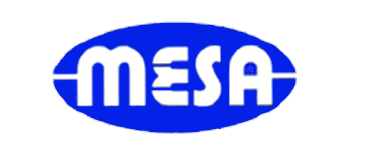

Environmental Gas Standards
MESA Specialty Gases & Equipment provides a number of Environmental Gas standards used to ensure environmental safety, compliance and meet regulatory requirements. MESA Specialty Gases & Equipment produces environmental gases to meet the unique needs in the following areas :
-
Standards for CEM and Stack Gas Monitoring
-
Automotive Exhaust Emission Standards
-
Ambient Air Monitoring Standards
-
Low Level NO Mixtures
-
EPA Protocol Gases
The following list indicates the most common components used in our mixtures. If you do not see the component you require, please contact us to check availability :
-
AMMONIA
-
CARBON DIOXIDE
-
HYDROGEN SULFIDE
-
METHANE
-
NITRIC OXIDE
-
OXYGEN
-
PROPANE
-
SULFUR DIOXIDE
-
VARIOUS MERCAPTANS
Pollution
Air pollution is the presence of any chemical, physical (e.g. particulate matter), or biological agent that modifies the natural characteristics of the atmosphere. The atmosphere is a complex, dynamic natural gaseous system that is essential to support life on planet earth.
Enforced air quality standards, like the Clean Air Act in the United States, have reduced the presence of some pollutants. While major stationary sources are often identified with air pollution, the greatest sources of emissions are actually mobile sources, primarily cars. There are many available air pollution control technologies and urban planning strategies available to reduce air pollution; however, worldwide costs of addressing the issue are high.
Sources
Air pollutants are classified as either directly released or formed by subsequent chemical reactions. A direct release air pollutant is one that is emitted directly from a given source, such as the carbon monoxide or sulfur dioxide, all of which are byproducts of combustion; whereas, a subsequent air pollutant is formed in the atmosphere through chemical reactions involving direct release pollutants. The formation of ozone in photochemical smog is the most important example of a subsequent air pollutant.
-
Anthropogenic sources (human activity) related to burning different kinds of fuel
-
Combustion-fired power plants
-
Controlled burn practices used in agriculture and forestry management
-
Motor vehicles generating air pollution emissions
-
Marine vessels, such as container ships or cruise ships, and related port air emissions
-
Burning fossil fuels
-
Burning wood, fireplaces, stoves, furnaces and incinerators
-
Other anthropogenic sources
-
Oil refining, power plant operation and industrial activity in general
-
Chemicals, dust and crop waste burning in farming
-
Fumes from paint, varnish, aerosol sprays and other solvents
-
Waste deposition in landfills, which generate methane
-
Natural Sources
-
Dust from natural sources, usually large areas of land with little or no vegetation
-
Methane, emitted by the digestion of food by animals, for example cattle
-
Pine trees, which emit volatile organic compounds (VOCs)
-
Radon gas from radioactive decay within the Earth's crust
-
Smoke and carbon monoxide from wildfires
-
Volcanic activity, which produce sulfur, chlorine, and ash particulates
